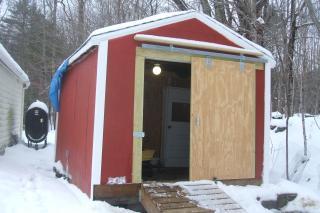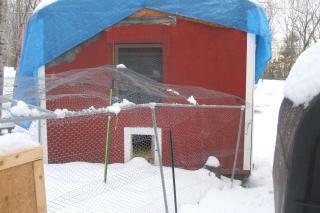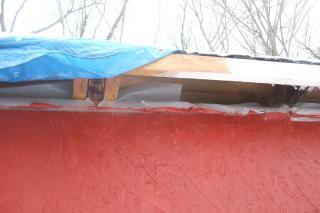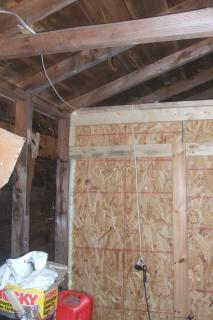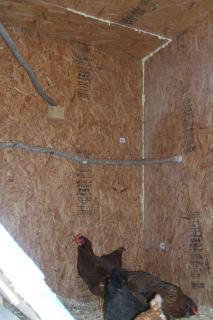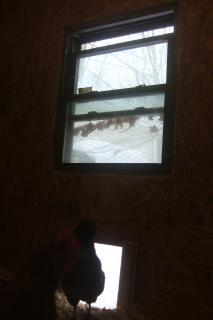- Nov 15, 2009
- 7
- 0
- 7
I've read a lot of posts about ventilation and have an idea of what I need to do to the coop but I'd love some personal advice. I have photos of my shed I converted to half coop and half storage this summer. (HOW DO I POST THEM TO YOU ON THIS MESSAGE?)
I've never had chickens but things were great until the cold weather started. Now, I worry about frost bite for my girls!
The eaves are open into the main building, but the coop itself is OSB boards closed tight to it's dropped ceiling. There is a window in the coop and a hatch door right below it. I have a light over the roosts that I can put a 100W light bulb in for winter lighting to get their 12 hours a day. (I got a timer, but haven't hooked it up yet)
Yesterday was the first day I didn't open the hatch door. It snowed and then rained most of the day. When I got home, the window had condensation on the inside and that's when I started worrying about frost bite overnight. The waterer was frozen (getting a heated base for the galvanized waterer today).
I'm wondering if I should cut the ventilation slots (at least 4 inches wide and 8 inches long - with wire mesh to keep out the critters) in the dropped ceiling or high up on the walls and utilize the open eaves or if I need more than just passive air through the eaves. ...sorry about the run on sentence there...
I planned on doing the deep shaving method on my wood floor for the winter, but now I worry about the poop creating more moisture. It doesn't smell like ammonia or anything. Is the food grade Diatomaceous Earth enough to control this moisture? Do you just sprinkle it on top of each layer of shavings you put down?
Some of my Comets have small black spots on their combs but they are still bright red and happy looking. These started back when the weather was still warm and I was thinking they were scabs from someone pecking(?) I would feel horrible if they get frost bite, or already have had it.
Thanks in advance for your thoughts. I love all the experienced people on this site! We are all lucky to have other chicken lovers around to ask these questions. I'm so happy to be a part of BYC.
Amy
I've never had chickens but things were great until the cold weather started. Now, I worry about frost bite for my girls!
The eaves are open into the main building, but the coop itself is OSB boards closed tight to it's dropped ceiling. There is a window in the coop and a hatch door right below it. I have a light over the roosts that I can put a 100W light bulb in for winter lighting to get their 12 hours a day. (I got a timer, but haven't hooked it up yet)
Yesterday was the first day I didn't open the hatch door. It snowed and then rained most of the day. When I got home, the window had condensation on the inside and that's when I started worrying about frost bite overnight. The waterer was frozen (getting a heated base for the galvanized waterer today).
I'm wondering if I should cut the ventilation slots (at least 4 inches wide and 8 inches long - with wire mesh to keep out the critters) in the dropped ceiling or high up on the walls and utilize the open eaves or if I need more than just passive air through the eaves. ...sorry about the run on sentence there...
I planned on doing the deep shaving method on my wood floor for the winter, but now I worry about the poop creating more moisture. It doesn't smell like ammonia or anything. Is the food grade Diatomaceous Earth enough to control this moisture? Do you just sprinkle it on top of each layer of shavings you put down?
Some of my Comets have small black spots on their combs but they are still bright red and happy looking. These started back when the weather was still warm and I was thinking they were scabs from someone pecking(?) I would feel horrible if they get frost bite, or already have had it.
Thanks in advance for your thoughts. I love all the experienced people on this site! We are all lucky to have other chicken lovers around to ask these questions. I'm so happy to be a part of BYC.
Amy

